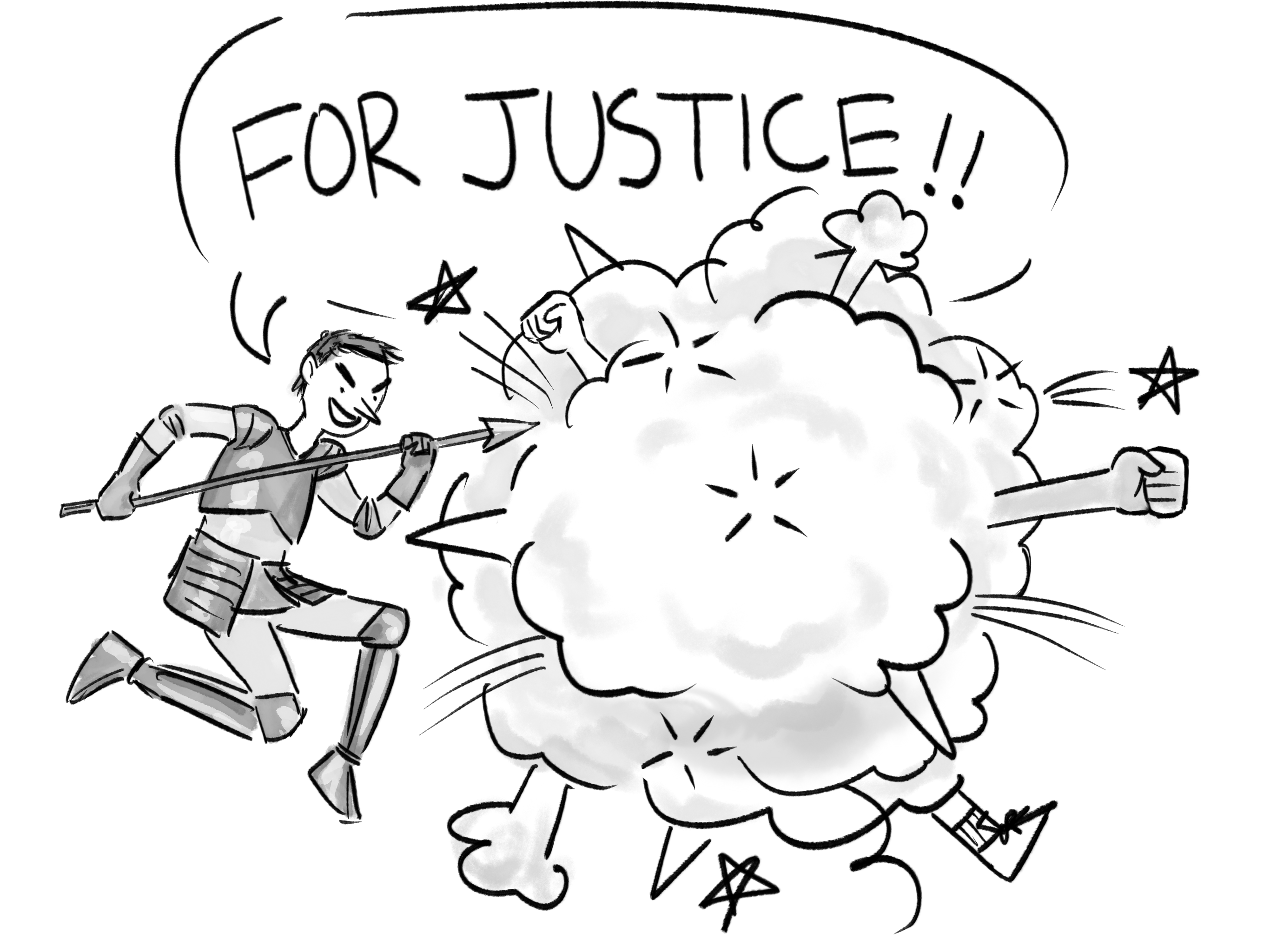What we can learn from controversial figures
April, 2025
Graphic: Katherine Chen
It is well-accepted that the sense of American security collapsed along with the World Trade Center back in 2001. From a country dazed and confused, the War on Terror began, and, soon enough, our generation was born: a population hyper-aware of and sensitive to instances of terrorism.
The September 11 attacks certainly dwarfed any instance of non-war violence that the United States had seen in the preceding decades — but terrorism did not start in the twenty-first century. Many students may remember learning about John Brown, who killed several pro-slavery expansionists and attempted a raid on Harpers Ferry to further the cause of abolition. Brown became a Union martyr in the years following his execution, and even today, many don’t necessarily deem him a terrorist.
To better understand Brown’s case, consider the definition of terrorism: an act of violence against non-combatants for a political aim. Non-combatants are everyday civilians who are not directly partaking in hostilities, while combatants are the actors in the conflict. Besides a simple semantic separation, this implies a distinction between the right to protection held by each group. Supposedly, the United States conducts war — an action justified in that it kills people who chose to fight — and its enemies conduct terrorism — an action unjustified in that it kills people who chose nothing. Brown never killed a truly “neutral” person, neither from his perspective nor ours today, because for both, to defend slavery constitutes such an abhorrent belief that it becomes violent by nature. But for the wider view of his day, abolition had become so polarized as a political issue that “neutrality” in its matter meant simply not engaging in physical violence for the cause.
Therefore, complications arise when evaluating who truly counts as a combatant. Somewhere between John Brown’s raid and the September 11 attacks may lie someone like Ted Kaczynski, otherwise known as the Unabomber. In Kaczynski’s manifesto, he detailed his fear that modern technological advancements would trigger a world without nature, human freedom and dignity. By mailing bombs to university professors conducting STEM research, airline executives, and advertisers, Kaczynski acted upon his extreme political opinions. With knowledge on the extent of global warming, Kaczynski might have very well argued that the everyday choices of Americans to use ecological resources such as gas and electricity and water, made them combatants against the Earth itself, which he defended.
The question of who is a combatant has come to a larger stage in the trial of Luigi Mangione. Even without any legal determination as to whether or not he murdered United Healthcare CEO Mark Thompson, Mangione has become a folk hero for his alleged action. To his defenders, the insurance CEO is responsible for the violent action of causing people to suffer unmanageable healthcare fees, whereas Luigi, if guilty, is only a victimized soldier in the class warfare that the rich started. The prosecution, meanwhile, sees a man murdered for doing his legal job and a terrorist responsible for that murder.
What made these cases compelling and generally socially accepted? Figures such as John Brown, Ted Kaczynski, and Luigi Mangione based their actions off of well researched, passionately defended ideological positions that tapped into public grievances. Their targets were not random but individuals seen as combatants responsible for systemic issues, whether it be slavery, the degeneration of humanity, or healthcare inequality. Their actions were not intended to instill fear into the general public but rather a distinct resistance towards a combatant.
In a community like Princeton, where student activism is often passionate and socially conscious, it’s important to ask: how do we define resistance, and where do we draw the line between protest and violence? While we don’t condone acts of harm, we can reflect on the motivations behind historical and controversial figures to understand how they were able to make people so deeply moved by injustice. PHS activists can learn that effective change comes not just from emotion, but from informed, strategic action that taps into shared concerns and presents compelling narratives.